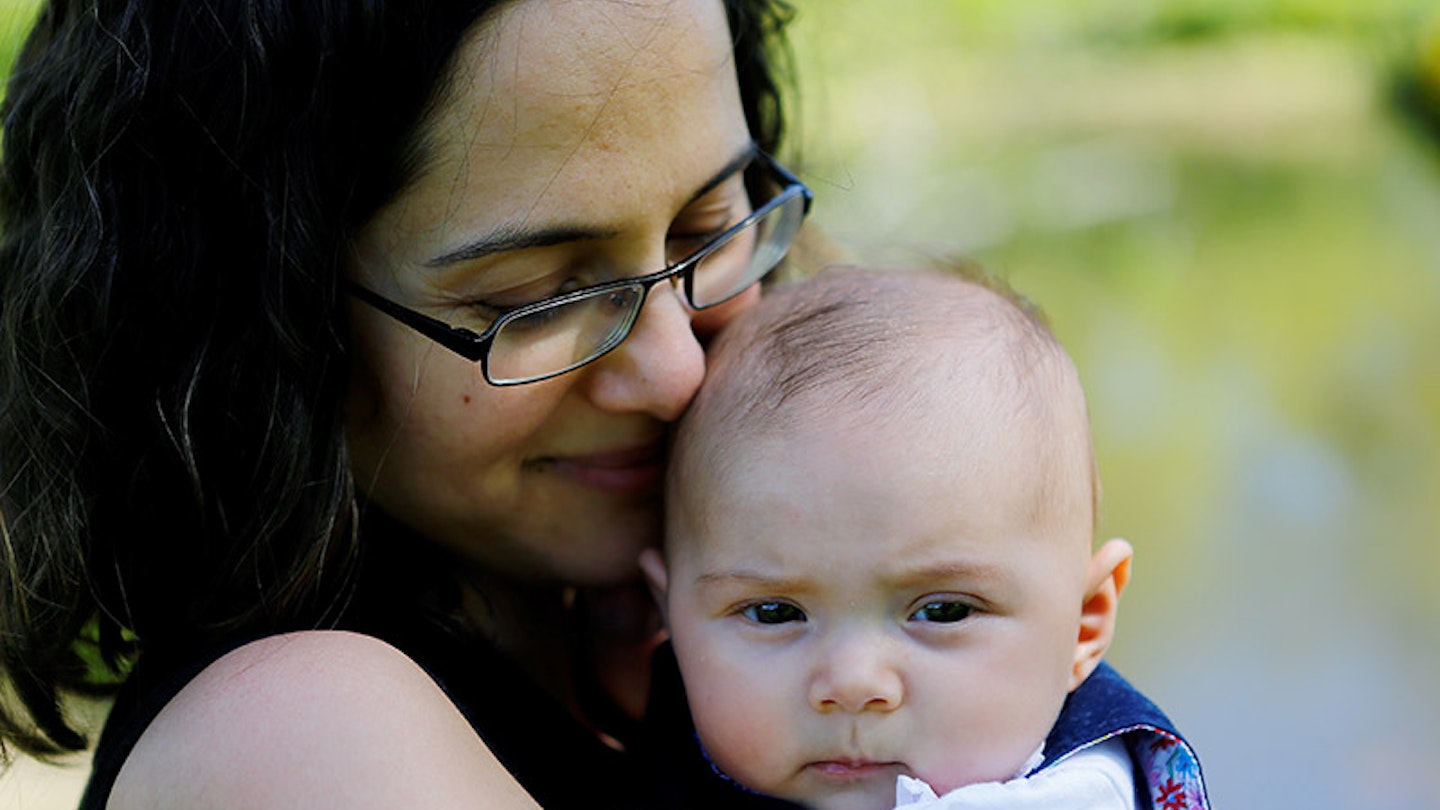Berna Turner, 35, from Kent, was told at 12 weeks into her first pregnancy that her baby had a high risk of being Down’s syndrome. She and her husband researched options and chose to pay for an IONA test.
When I discovered I was pregnant I was very excited and nervous. We had been trying for a while and after months of disappointment it took a while for the good news to sink in. I don’t think anything can prepare you for the feeling when you first discover that there is a little baby growing inside you.
We had a private scan at 10 weeks and all was well. It was during the 12-week checkup that a routine blood test advised of a low PAPP-A level which is associated with higher risk of a Down’s baby. That came as a traumatic shock, especially as I was only 35 years old.
No-one wants to be told they are high risk and you immediately start to blame yourself and consider the worst case outcomes. This really took away from our pleasure of knowing we were pregnant and we didn’t share the happy news with anyone.
>> READ: “THERE’S NO POTENTIAL FOR MISCARRIAGE WITH THE IONA TEST - THAT’S WHY WE DECIDED TO DO IT”
We did our own research to try and understand the background and options available. You are not given a lot of time to decide as there is a window of opportunity in pregnancy for hospital-run tests: 11 to 14 weeks in this case.
We were recommended to have a Chorionic Villus Sampling (CVS) test where a needle is inserted into your tummy to take samples of cells from the placenta, but it carries the chance of miscarriage.
My husband had heard of the IONA test through a colleague. I thought it was great that it only involved taking blood, and I was actually a little angry that the IONA test was not the first option presented to us.
It felt like there was no contest: one carries a risk of miscarriage, the other doesn’t. The IONA test doesn’t just look at Down’s but also Patau’s and Edward’s syndrome.
This left one simple consideration and that was cost. We paid for the test (about £300) at St George’s hospital in London. For us, the peace of mind and risk-free nature of the test far outweighed any cost concerns.
I took the test in my lunch hour and it was about 15 minutes from start to finish. We received the results in the post in five days. The comfort the result brought was quite overwhelming. It was the moment that I felt I was allowed to get excited about the pregnancy and it was the trigger to let me share our news with friends and family.
>> READ: “I WAS THE FIRST WOMAN IN THE UK TO BE OFFERED THE IONA TEST”
My pregnancy was quite straightforward, apart from suffering from fibroid pains in the fourth month.
Our baby Izzy was a bit impatient and came along 10 days early in January. My labour was unusually quick for a first time. My waters broke at 2am on Friday morning but as I wasn’t having contractions I was told that I would be booked in for induction on Saturday morning.
However, by 8am my contractions started, by 10am they were five minutes apart and by 5pm I was holding her in my arms!
She was a tiny little thing at 5 lb 9 oz and she wanted to be held 24/7 for the first six weeks.
With time, Izzy became more comfortable with her surroundings and started sitting in her bouncy chair, lying in her baby gym and sleeping in her crib which was a huge relief.
She has been a good eater but has got to the stage where anything is more interesting than eating.
She’s a healthy and curious baby who knows how to play mummy and daddy with well-timed cries and gorgeous smiles!
